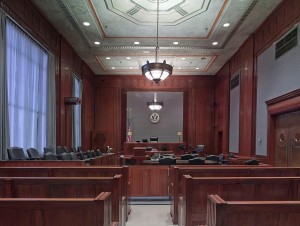By Sophia Blair
On November 10, 2016, the Fourth Circuit issued a published opinion in the criminal case, United States v. Williams. Earnest Lee Williams Jr. (“Williams”) was charged with attempting to enter a bank with the intent to commit a felony and larceny in violation of 18 U.S.C. § 2113(a). Williams pleaded guilty to the charge and was sentenced under U.S.S.G. § 2B3.1, pursuant to its robbery guidelines. Williams appealed his sentence, arguing that the district court erroneously applied the robbery guideline under U.S.S.G. § 2B3.1 instead of the burglary guideline under U.S.S.G. § 2B2.1. The Fourth Circuit agreed with Williams, vacated his sentence, and remanded to the district court for resentencing under the burglary guideline.
Facts and Procedural History
In January 2014, Williams approached a Southern Bank building (“Bank”) in Rocky Mount, North Carolina. Williams was unarmed and, as he later admitted to police, simply planned on telling the bank tellers to place the Bank’s money in his bag. Williams entered the exterior doors of the Bank into an anteroom. Before he could enter the interior doors into the Bank, a teller who thought she recognized Williams from a previous robbery locked all of the doors. The teller asked Williams through an intercom whether he had an account and he said he did, though he had left his bank card in his car. The teller unlocked the exterior doors and told Williams to use the drive-through window. Williams went back to his car and drove off. The police were called and they quickly apprehended Williams. After being read his rights, Williams admitted to the police that he was in need of money as well as his plan to rob the Bank.
In August 2014, a federal grand jury indicted Williams for violating 18 U.S.C. § 2113(a). Williams pleaded guilty to the charge. § 2113(a) is covered by four Sentencing Guideline section including U.S.S.G. § 2B3.1 (Robbery) and § 2B2.1 (Burglary). The probation officer calculated Williams’ imprisonment range at 37–46 months according to the robbery guideline.
Williams objected to the application of the robbery guideline for sentencing because he pled guilty to an indictment for burglary without reference to force or violence. Specifically, Williams was charged with “attempting to enter a bank . . . with the intent to commit in such bank a felony affecting such bank . . . .” Given the lack of force or violence, the burglary guideline was more applicable, and would yield an imprisonment range of 10–16 months.
The probation officer contended that the robbery guideline was more applicable because it contained a sentencing enhancement for targeting a financial institution, while the burglary guideline did not. The district court agreed with the probation officer that the robbery guideline would apply, and sentenced Williams to a term of 38 months. Williams appealed.
Improper Application of Robbery Guideline
The Fourth Circuit agreed with Williams that the burglary guideline should apply. When a conviction falls under the express terms of multiple guidelines, the sentencing court must apply the most applicable one. Relying on United States v. Boulware, the Fourth Circuit held that the most applicable guideline is determined by comparing the guideline texts with the charged misconduct. The court should not compare the guidelines to the statute or the actual conduct because they may implicate several guidelines or include factors of indicted offenses instead of elements.
18 U.S.C. § 2113(a)
2113(a) may be violated either by robbery or burglary. Bank robbery involves attempting to take from a bank by force, intimidation, or extortion, while burglary simply involves entering a bank with the intent to commit a crime. Because there was no element of force in the indictment, the Fourth Circuit held that Williams should have been sentenced under the burglary guidelines.
Disposition
Because there was no element of force in the indictment to which Williams pled, the Fourth Circuit vacated the district court’s judgment and remanded the case for resentencing under the burglary guideline § 2B2.1.


